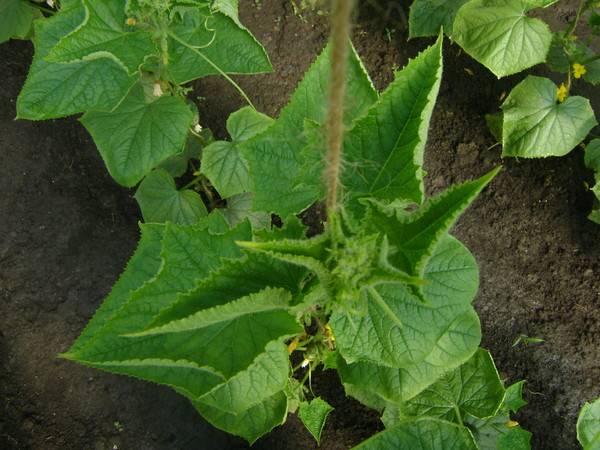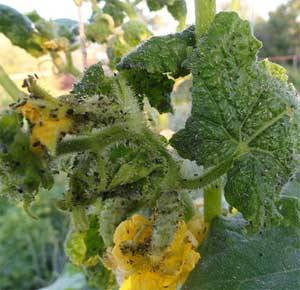Having found diseased plants in the garden, you must first find out why the leaves of the cucumbers in the greenhouse curl, and only then take the necessary measures. Rough action can lead to even greater problems and jeopardize the fate of the crop.
Leaves are an indicator of problems
Cucumbers are a favorite vegetable crop of many gardeners, even despite certain difficulties in growing them. These vegetables are very demanding on the temperature regime, air humidity, the amount of dressing, and if you do not provide them with decent conditions, then getting a good harvest will be very problematic.
Most often, the crop is grown in a greenhouse, but even under these conditions it is difficult to protect it from various diseases. Even experienced vegetable growers sometimes find it difficult to immediately explain the cause of a particular problem. For example, why the leaves of plants change color and curl like the pages of an old book.
There can be several reasons for changing the appearance of the sheet plate. This will most likely not kill the plant, but will significantly affect the yield. Therefore, it is necessary to find out the factor contributing to the occurrence of the problem and try to quickly eliminate it.
Most often, curling of cucumber leaves is the plant's reaction to a lack of basic nutrients in the soil: nitrogen, magnesium, calcium, sulfur. A nutritional deficiency for vegetable crops can result from improper soil preparation before planting or insufficient use of complex fertilizers for fertilizing during the growing season.
In such conditions, moisture evaporation from their surface is activated. And in order to preserve it as much as possible, the plant reduces the area of the leaf plate by curling. Often this picture can be observed on dry hot days.
Similar changes can occur with high humidity, especially if there is poor ventilation in the greenhouse.
The leaves of cucumbers growing in a greenhouse can also change as a result of infection with viral diseases or parasites. When attacked by aphids, wireworm or other pests, the leaf on the affected bush will curl.
In this way, the plant signals the vegetable grower to take urgent measures to eliminate the pest.
Control methods
If the cucumbers in the greenhouse lack moisture, then they need to be watered urgently.
But before that, it is recommended to loosen the top layer of the soil. Watering is best done in the morning and evening with small amounts of warm water. If necessary, during this period, you can apply complex fertilizers mixed in a liquid. This will eliminate nutrient deficiencies. And you can also carry out foliar feeding by spraying the plants with a specially prepared mixture of water with nutrients or biostimulants. With this method of applying fertilizers, their assimilation occurs as intensively as possible.
However, at this moment you need to be extremely careful not to carry out such events on hot days. Otherwise, the plants can get sunburn and there is a risk of finding their leaves twisted and yellowed the next day.
After watering, it is recommended to mulch moistened beds. This will make it possible to retain the necessary moisture in the greenhouse, minimizing the percentage of evaporation as much as possible.
If parasite colonies are found on greenhouse plantings, it is necessary to treat the affected areas with an effective remedy.Good results can be obtained by spraying the bushes with a solution of ordinary laundry soap. For greater efficiency, ground red pepper or mustard powder is added to it.
Quite popular among gardeners is a mixture of 100 g of laundry soap and 100 g of wood ash, dissolved in 12 liters of water.
In case of significant infection, it may be necessary to use more serious insecticidal preparations, which can always be purchased at specialized retail outlets.












